#parasitism
Text
Parasitic plant convinces hosts to grow into its own flesh—it's also an extreme example of genome shrinkage
@bogleech I feel you'd be interested in this if you aren't already aware of it.
902 notes
·
View notes
Text

rejected valentine's day card #1
2K notes
·
View notes
Text
THIS IS SO COOL! So animals can get fungal infections, as can plants and even other fungi. We've seen fungi like Cordyceps produce fruiting bodies on insect hosts postmortem. But this is the first known observation of a fruiting body on a live host! And the frog apparently seemed to be in good health otherwise.
It's likely a situation with an opportunistic spore of Mycena landing in a wound or other small vulnerability on the frog's skin, and since amphibians have to stay wet, the fungus had plenty of water. I'm not sure what it's been consuming since Mycena normally is a decomposer of dead plant tissue; maybe dead skin cells and bacteria?
Before people start leaping to conclusions, this is NOT the start of some sort of zombie apocalypse. Mycena and Cordyceps engage with their hosts in very different ways, and neither are anywhere near related to any fungi that parasitize human hosts and which do not cause any sort of altered mental state of that sort. I find it kind of sad when people have to sci-fi a new scientific discovery in order to find it interesting enough to think about, instead of just appreciating how awesome, weird, and scary nature is all on its own.
Regardless, this is a really spectacular find, and we'll see if any other crop up or whether this was one of those once-in-a-lifetime discoveries.
#fungi#fungus#mushrooms#amphibians#herps#frogs#nature#wildlife#animals#ecology#science#scicomm#parasitism#Mycena#Cordyceps#biology#mycology
280 notes
·
View notes
Text
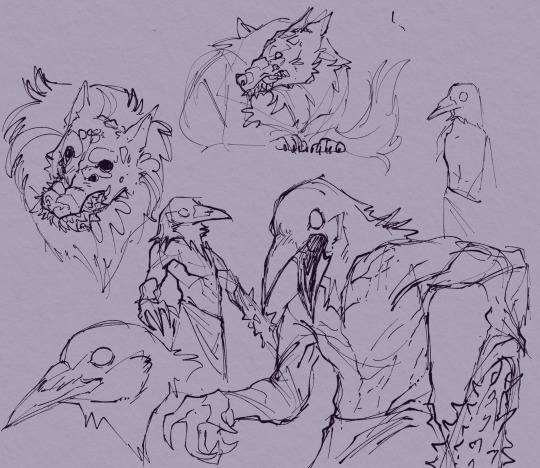

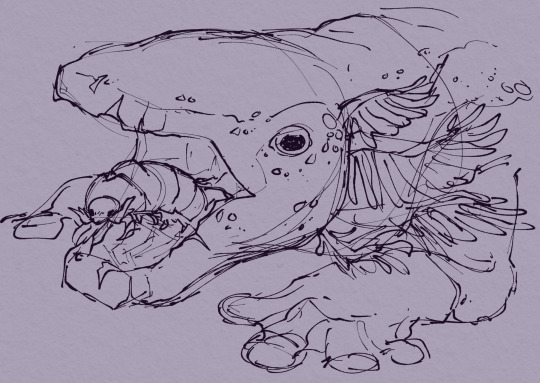
scared and hungie
been watching supereyepatchwolf's streams of this game and loving it. when he was fighting the salmonsnake he never allowed the tongue to extend for its attack, and due to the ridges i thought it was gonna be a tongue-eating louse.. also what's up with the two-headed crow mauler
560 notes
·
View notes
Photo
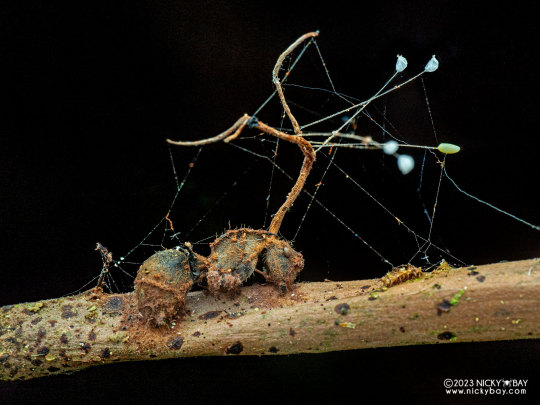
Ant infected with cordyceps fungus featuring lacewing eggs that were deposited on the fungal body - all hatched except one.
Photographed in Singapore by Nicky Bay // Website // Facebook
Shared with permission; do not remove credit or re-post!
Bonus cordyceps photos:
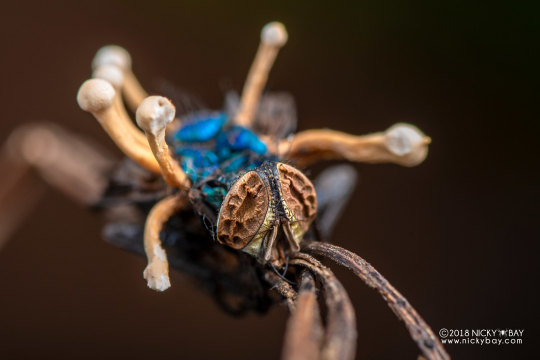
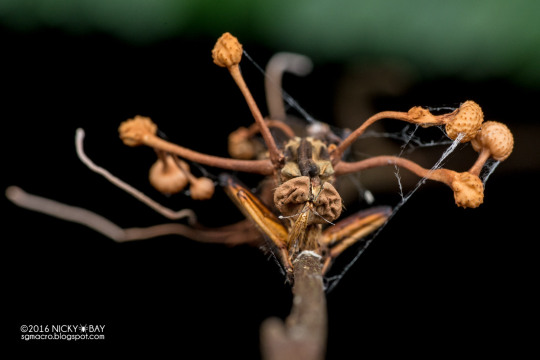





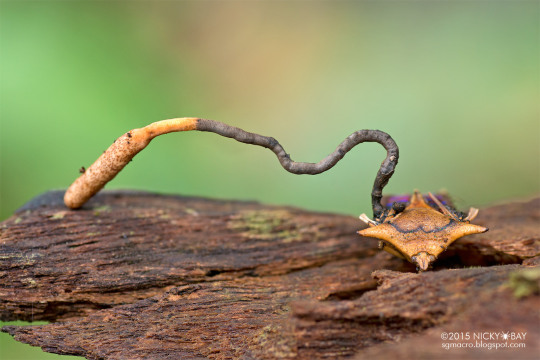

#animals#curators on tumblr#insects#bugs#arachnids#fungus#parasite#parasitism#parasitic fungus#entomopathogenic fungus#cordyceps#dead bugs#spider#true bugs#fly#wasp#ant#one nice bug#but dead this time#:(
485 notes
·
View notes
Text

Tarantula hawk wasp paralyzing a tarantula
By: E. S. Ross
From: Natural History Magazine
1984
#predation#parasitism#tarantula hawk wasp#wasp#hymenopteran#insect#arthropod#invertebrate#1984#1980s#E. S. Ross#Natural History Magazine
180 notes
·
View notes
Text
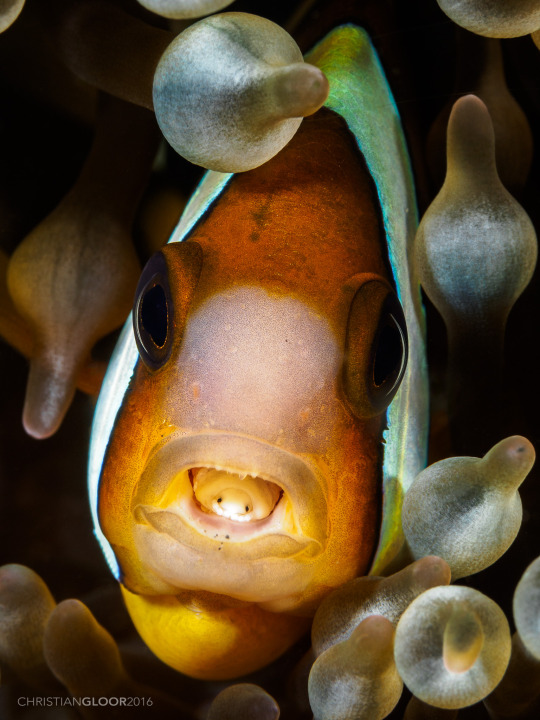
Louse got your tongue? If you’re a fish, it just might. The tongue-eating louse (Cymothoa exigua) is a parasitic crustacean. As a juvenile, it swims into the gills of fish. Once inside, it latches onto a fish’s tongue, sucking blood until the appendage atrophies or withers away. Then, the louse attaches itself to the stub that’s left behind, functionally replacing the organ. This parasite doesn’t kill its host: In fact, it may even mate with other louses while inside the fish!Photo: Christian Gloor, CC BY 2.0, flickr
352 notes
·
View notes
Photo
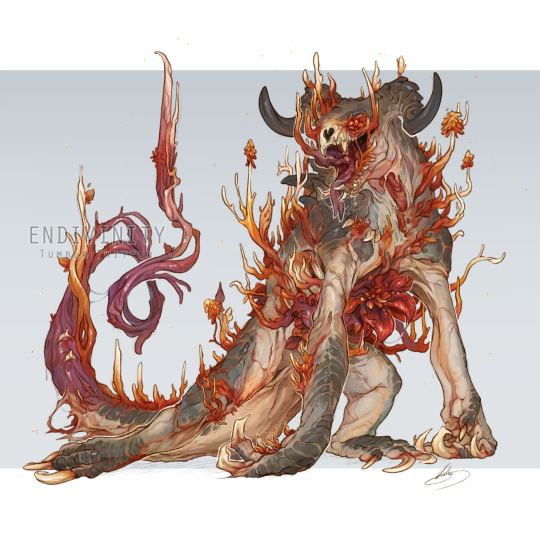

Twenty one with Infested!
No, god no, no no no, nope, do NOT go near this thing, how is it still moving, please no
#body horror /#cordyceps#parasitism#gore /#eye horror /#undead creature#deathclaugust#kullen art#deathclaw#fallout#fallout 4#look at that smile. shes so happy to be here
2K notes
·
View notes
Text
There’s been new research into human follicle mites and how their long term relationship with humans has lead to some unusual anatomical adaptations, as well as further confirmation that they probably benefit us as mutualists and some new discussion of how dependent they are on only human hair follicles as their habitat.
But the article going viral right now mangles this concept in the most ridiculous way I have ever seen in my entire life of reading bug articles.
----

-----
First of all the word “symbiont” does not mean beneficial. Parasites are also symbiotic. Symbiosis is any obligatory relationship between two organisms, good or bad. The idea that “symbiosis” is just the “partnership” kind was basically invented by Spider Man/Venom in the 90′s.
Second, living in human pores is not “internal” symbiosis. Internal symbiosis would be completely under our skin and in our organs or bloodstream.
Third, they aren’t just now gradually changing into mutualists, we’re just getting new confirmation that they have probably been helpful to us for probably millions of years.
Almost every other article reporting on this mangles it a little further, and they all tend to use the completely incorrect images of these animals, too:
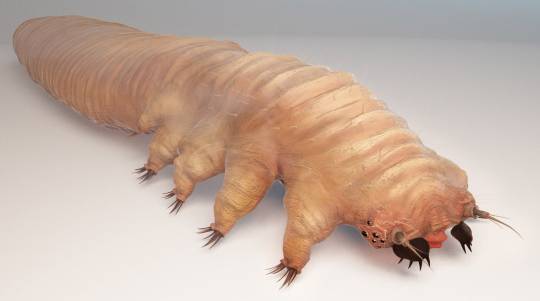
This CG model is unfortunately based on another mixed-up “science” article from years ago that mistakenly used a photograph of a caterpillar:
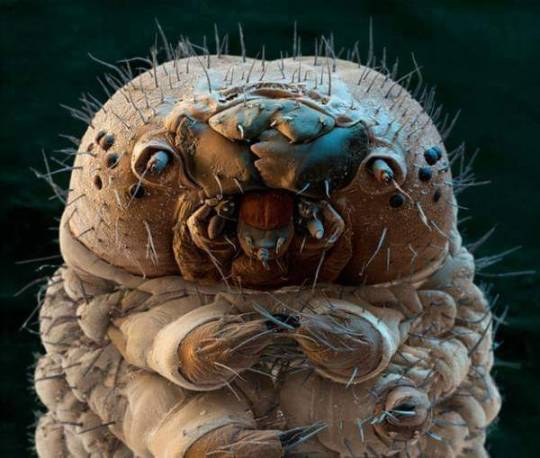
The real face mite has none of this anatomy, and is a simpler tubular blob-creature:
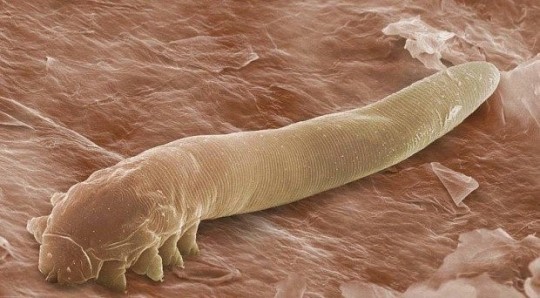
2K notes
·
View notes
Text
often im a lil angy at the fact that I'm like. real fucking bad at writing prose. i dont WANNa write the thing i'm thinking of i wanna read it
fucked up body horror/parisitism under the cut I'll tag the post appropriately
i once did a horror short submission about a failing author who, while sorting through his super successful-journalist-dead-grandfather's stuff, discovers a bookworm-creature made out of ink that latches into the inside of his throat like one of those tongue fish-tongue parasites and turns him into a successful author as he learns that depending on the voice that lives as his own tongue makes his life better than it was before
something something allegory of generational expectations being met by any cost necessary especially the cost of ones own voice/the need to prove to ones immigrant family that one is a success as they look down on your job in the "creative" field
anyways
every readthrough/edit i did it,,,,hhhHHhHhHh the pacing was bad, the paragraph order always seemed awkward, the dread didn't build so much as it congealed into a vague clump.
if literally any horror writers wanna pick this bad boy up to expand into a full short PLEASE you'd do a better job than I could
180 notes
·
View notes
Text

Death's Head
58 notes
·
View notes
Text
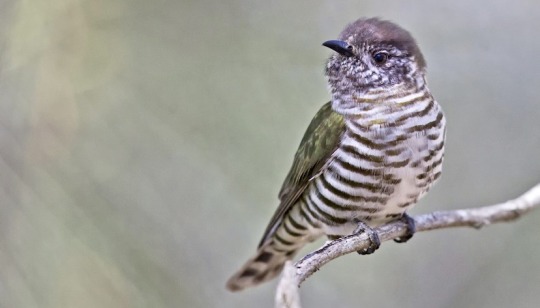

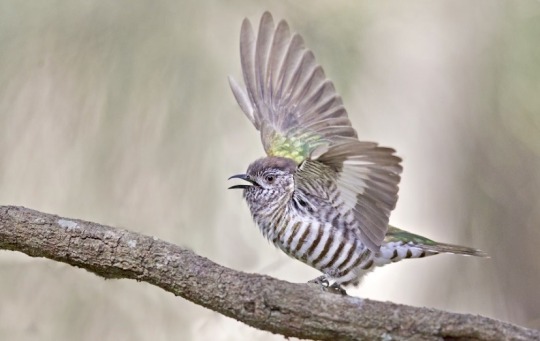


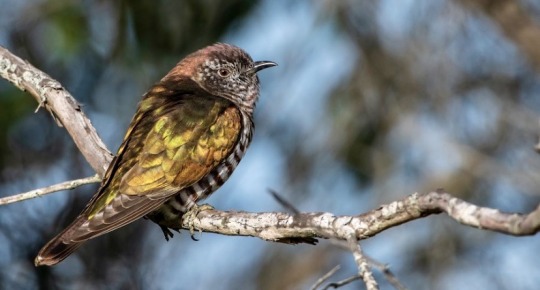

the shining-bronze cuckoo is a small cuckoo native to australia, new zealand, and surrounding islands. they primarily feed on insects caught in flight, with a preference for moths. the sexes are similar, but females’ heads and necks have a purple sheen and have deeper brown barring. these birds are nest parasites, and do not raise their own young. they lay a single egg in the nest of a host parent, removing one of the brood’s preexisting eggs. when the cuckoo chick hatches, it will displace other baby birds from the nest almost immediately, gaining the undivided attention and feeding from the host species. they commonly invade grey warbler nests; in one study, up to 55% of nests were taken over by shining-bronze cuckoos.
#shining-bronze cuckoo#cuckoo#bird#birblr#parasite#parasitism#parasitic#nest parasite#i need to go back and add the source but tumblr won’t let me link anything else rn 🫠 idk why
565 notes
·
View notes
Text

LOVE BUGS💕 happy valentine's day!
57 notes
·
View notes
Text

Lobopodians were some of the earliest known panarthropods, closely related to velvet worms, tardigrades, and the ancestors of all the true arthropods. They were small soft-bodied worm-like animals with multiple pairs of fleshy legs, and some species also bore elaborate spikes, armor plates, and fleshy bumps all over their bodies – with the spiny Hallucigenia being the most famous example.
But unlike its more charismatic relative Paucipodia inermis here didn't seem to have any ornamentation at all.
Known from the Chinese Chengjiang fossil deposits, dating to about 518 million years ago, Paucipodia lived in what was then a shallow tropical sea. Its 13cm long (~5") tubular body had nine pairs of legs, with each foot tipped with a pair of hooked claws, and the inside of its mouth was ringed with tiny sharp teeth.
Several specimens have been found preserved in association with the weird gummy-disc animal Eldonia, which may indicate Paucipodia either preyed on them or scavenged on their carcasses.
Some Paucipodia fossils also have enigmatic tiny "cup-like" organisms attached to their legs. It's currently unknown what exactly these were, or whether they were parasitic in nature or simply opportunistically "hitching a ride" similar to the Inquicus found on armored palaeoscolecid worms in the same fossil beds.
———
NixIllustration.com | Tumblr | Twitter | Patreon
#science illustration#paleontology#paleoart#palaeoblr#paucipodia#lobopodia#panarthropoda#arthropod#invertebrate#cambrian explosion#parasitism#symbiosis#oh worm
389 notes
·
View notes
Photo






Moth ravaged by Parasitic Fungi
These types of fungi can attack a variety of insects.
Unidentified, kingdom Fungi
07/08/22
387 notes
·
View notes
Text
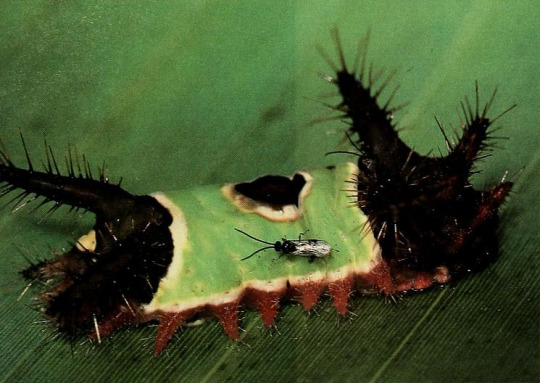
A braconid wasp laying eggs on a saddleback moth caterpillar
By: Raymond A. Mendez
From: Natural History Magazine
1984
#parasitism#wasp#hymenopteran#insect#arthropod#invertebrate#moth#1984#1980s#Raymond A. Mendez#Natural History Magazine
107 notes
·
View notes